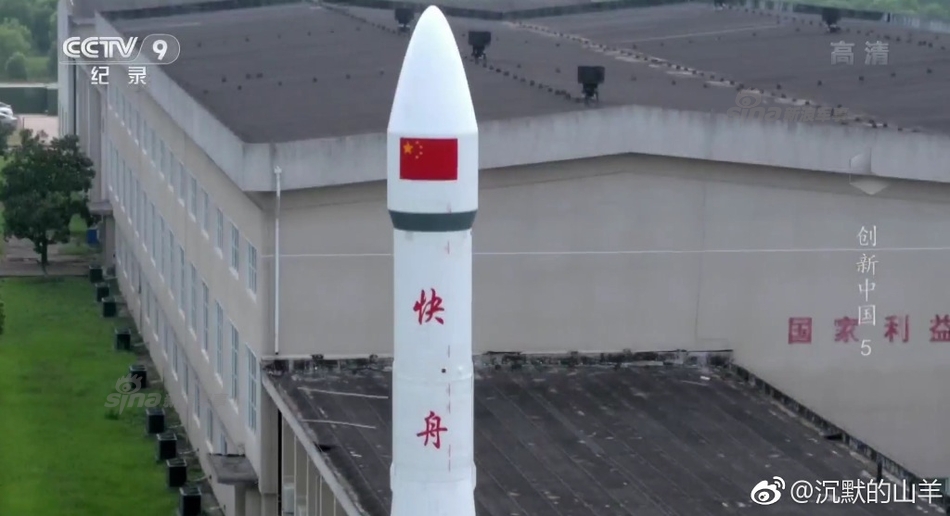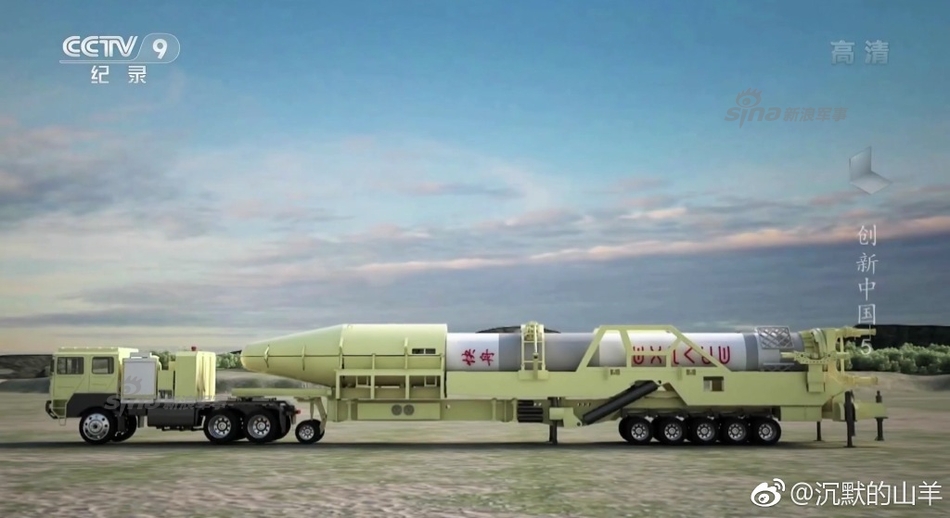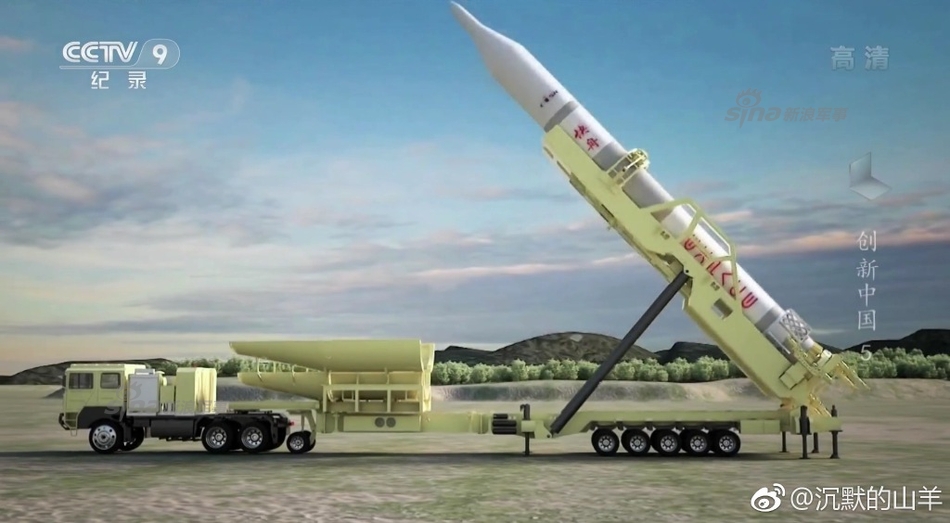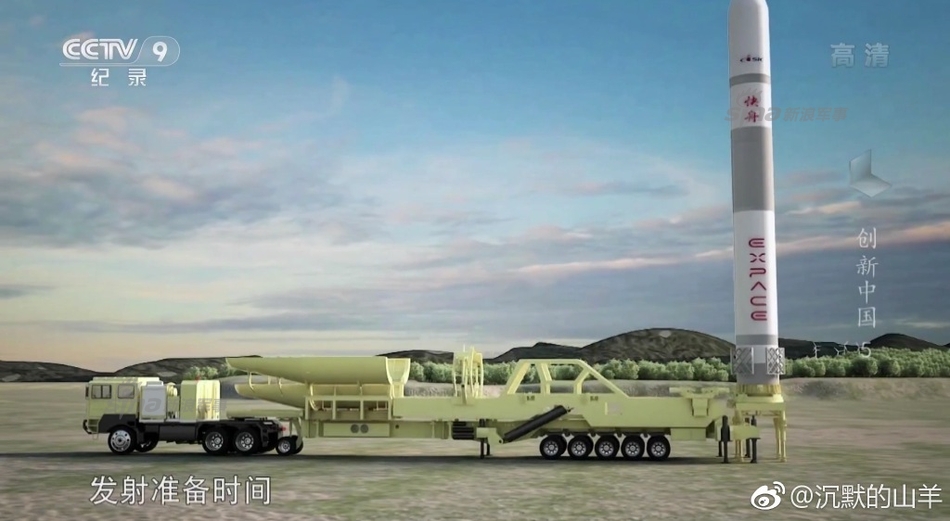You are using an out of date browser. It may not display this or other websites correctly.
You should upgrade or use an alternative browser.
You should upgrade or use an alternative browser.
China's Space Program News Thread
- Thread starter crazyinsane105
- Start date
- Status
- Not open for further replies.
SinoSoldier
Colonel
Could somebody translate the following video? What does it say about the developmental stage of the YF-XX lunar engine?
It is mostly about YF-100 (120t class used on LM-5) improvement which is swivel after turbo pump. It also said, this new tech will be used on the 500t class engine (lunar engine). The first firing of the swivel was done in June 2017. The designer also said that this tech is the last obstacle for the 500t class (as we know that the pre burner and pump has been tested).Could somebody translate the following video? What does it say about the developmental stage of the YF-XX lunar engine?
China Seismo-Electromagnetic Satellite (CSES) - aka Zhangheng-1 launched
China launches electromagnetic satellite to study earthquake precursors
JIUQUAN, Feb. 2 (Xinhua) -- China on Friday launched its first seismo-electromagnetic satellite to study seismic precursors, which might help establish a ground-space earthquake monitoring and forecasting network in the future.
A Long March-2D rocket launched at 15:51 from Jiuquan Satellite Launch Center, in northwest China's Gobi Desert, carried the 730-kilogram China Seismo-Electromagnetic Satellite (CSES) into a sun-synchronous orbit at an altitude of about 500 kilometers.
Known as Zhangheng 1 in Chinese, it will help scientists monitor the electromagnetic field, ionospheric plasma and high-energy particles for an expected mission life of five years, said Zhao Jian, a senior official with China National Space Administration (CNSA).
The satellite is named after Zhang Heng, a renowned scholar of the East Han Dynasty (25-220), who pioneered earthquake studies by inventing the first ever seismoscope in the year 132.
Zhangheng 1 will record electromagnetic data associated with earthquakes above 6 magnitude in China and those above 7 magnitude around the world, in a bid to identify patterns in the electromagnetic disturbances in the near-Earth environment, Zhao said.
Covering the latitude area between 65 degrees north and 65 degrees south, it will focus on Chinese mainland, areas within 1,000 kilometers to China's land borders and two major global earthquake belts.
Zhangheng 1 was funded by CNSA, developed by China Earthquake Administration (CEA) and produced by DFH Satellite Co., Ltd., a subsidiary of China Academy of Space Technology (CAST).
Based on a CAST2000 platform, Zhangheng 1 is a cubic satellite, 1.4 meters on each side. It has a single solar panel and six booms, which will deploy and keep electromagnetic detectors more than 4 meters away from the satellite, said Zhou Feng, a senior manager with DFH Satellite Company.
It carries a high-precision magnetometer, a search-coil magnetometer and electric field probes to measure components and intensity of the magnetic and electric fields. It is also equipped with a Langmuir probe, a plasma analyzer, a GNSS occultation receiver and a tri-band beacon to measure in-situ plasma and ionospheric profile as well, Zhou said.
It also carries high-energy particle detectors, some of which are provided by Italian partners, and a magnetic field calibration device developed in Austria, according to Zhou.




China launches electromagnetic satellite to study earthquake precursors
JIUQUAN, Feb. 2 (Xinhua) -- China on Friday launched its first seismo-electromagnetic satellite to study seismic precursors, which might help establish a ground-space earthquake monitoring and forecasting network in the future.
A Long March-2D rocket launched at 15:51 from Jiuquan Satellite Launch Center, in northwest China's Gobi Desert, carried the 730-kilogram China Seismo-Electromagnetic Satellite (CSES) into a sun-synchronous orbit at an altitude of about 500 kilometers.
Known as Zhangheng 1 in Chinese, it will help scientists monitor the electromagnetic field, ionospheric plasma and high-energy particles for an expected mission life of five years, said Zhao Jian, a senior official with China National Space Administration (CNSA).
The satellite is named after Zhang Heng, a renowned scholar of the East Han Dynasty (25-220), who pioneered earthquake studies by inventing the first ever seismoscope in the year 132.
Zhangheng 1 will record electromagnetic data associated with earthquakes above 6 magnitude in China and those above 7 magnitude around the world, in a bid to identify patterns in the electromagnetic disturbances in the near-Earth environment, Zhao said.
Covering the latitude area between 65 degrees north and 65 degrees south, it will focus on Chinese mainland, areas within 1,000 kilometers to China's land borders and two major global earthquake belts.
Zhangheng 1 was funded by CNSA, developed by China Earthquake Administration (CEA) and produced by DFH Satellite Co., Ltd., a subsidiary of China Academy of Space Technology (CAST).
Based on a CAST2000 platform, Zhangheng 1 is a cubic satellite, 1.4 meters on each side. It has a single solar panel and six booms, which will deploy and keep electromagnetic detectors more than 4 meters away from the satellite, said Zhou Feng, a senior manager with DFH Satellite Company.
It carries a high-precision magnetometer, a search-coil magnetometer and electric field probes to measure components and intensity of the magnetic and electric fields. It is also equipped with a Langmuir probe, a plasma analyzer, a GNSS occultation receiver and a tri-band beacon to measure in-situ plasma and ionospheric profile as well, Zhou said.
It also carries high-energy particle detectors, some of which are provided by Italian partners, and a magnetic field calibration device developed in Austria, according to Zhou.




Hendrik_2000
Lieutenant General
Chinese Private Sector Marching into Space Industry
So Falcon Heavy made a maiden flight yesterday. Almost perfectly.
Soon it will fly again.... 90 m$ a flight is crazy cheap...
BFR is coming soon too...
Wonder what will be the Chinese answer...
Soon it will fly again.... 90 m$ a flight is crazy cheap...
BFR is coming soon too...
Wonder what will be the Chinese answer...
The simple answer is "keep an eye on it, nothing much"So Falcon Heavy made a maiden flight yesterday. Almost perfectly.
Soon it will fly again.... 90 m$ a flight is crazy cheap...
BFR is coming soon too...
Wonder what will be the Chinese answer...
First of all, I am not a fun of Elon Musk. He is without doubt a good businessman in attracting media attentions to grab investment, but SpaceX is more like Facebook and Google than an Engineering company. Too much of commercial stunt.
Now, let's go technical.
1. The very own plan of engine "Raptor" by SpaceX tells that SpaceX does not have a good engine and Elon Musk knows it very well. Put it simple, if shooting 27 engines boundled together is the solution for heavy lift, why would Elon Musk want "Raptor"? To burn more money? The ancient Chinese would have built a heavy lift rocket by boudling up hundreds of thousands of this

2. Falcon rocket is 3 meter diameter, that is tinny to be a heavy launch. Putting a 5 meter fairing will cause serious balancing problem. Why 3 meter then? Because SpaceX has not been able to build 5 meter.
3. Falcon rocket is extremely slim in proportion, it is good in reducing drag, but bad in balance. Putting a 5 meter fairing will almost eliminate its benefit.
Note, I am not against SpaceX because it is from America. I am against its flamboyant social media like culture. Remember the American engineers who designed Saturn, Shuttle and Delta IV are no less smart than people in SpaceX, so are the Europeans in ESA and Chinese in CASTC. They all work on 5 and 10 meter rocket and super powerful engine, 600tons for US and 500tons for China. Science works the same way in the hand of Boeing, CASTC and SpaceX.
Quickie
Colonel
The simple answer is "keep an eye on it, nothing much"
First of all, I am not a fun of Elon Musk. He is without doubt a good businessman in attracting media attentions to grab investment, but SpaceX is more like Facebook and Google than an Engineering company. Too much of commercial stunt.
Now, let's go technical.
1. The very own plan of engine "Raptor" by SpaceX tells that SpaceX does not have a good engine and Elon Musk knows it very well. Put it simple, if shooting 27 engines boundled together is the solution for heavy lift, why would Elon Musk want "Raptor"? To burn more money? The ancient Chinese would have built a heavy lift rocket by boudling up hundreds of thousands of this
2. Falcon rocket is 3 meter diameter, that is tinny to be a heavy launch. Putting a 5 meter fairing will cause serious balancing problem. Why 3 meter then? Because SpaceX has not been able to build 5 meter.
3. Falcon rocket is extremely slim in proportion, it is good in reducing drag, but bad in balance. Putting a 5 meter fairing will almost eliminate its benefit.
Note, I am not against SpaceX because it is from America. I am against its flamboyant social media like culture. Remember the American engineers who designed Saturn, Shuttle and Delta IV are no less smart than people in SpaceX, so are the Europeans in ESA and Chinese in CASTC. They all work on 5 and 10 meter rocket and super powerful engine, 600tons for US and 500tons for China. Science works the same way in the hand of Boeing, CASTC and SpaceX.
I look at the mass of the payload and the type of orbit. Launching a 2000 kg mass (the mass of the Tesla) into geostationary orbit is only about half of the GTO payload that is presently regularly launched into orbit since some time ago.
The real challenge would be launching a much heavier payload that it's designed for (26,700kg to GTO, as opposed to the 2000 kg to 3000 kg payload that was actually launched) with all the engines at much higher power output.
Last edited:
Only the weight of a truly useful payload (satellites, not a space junk "car") is the meaningful payload. Theoretical figure is always nice to see, but only a clever marketing trick, until a true payload is up in the space.I look at the mass of the payload and the type of orbit. Launching a 2000 kg mass (the mass of the Tesla) into geostationary orbit is only about half of the GTO payload that is presently regularly launched into orbit since some time ago.
The real challenge would be launching a much heavier payload that it's designed for (26,700kg to GTO, as opposed to the 2000 kg to 3000 kg payload that was actually launched) with all the engines at much higher power output.
Elon Musk is clever in that, he may never need to prove that he can deliver his promise, 26.7 tons to GTO on his super slim rocket. To prove that, somebody (US government) has to first make a gigantic satellite weighing more than 25 tons FIRST. By the time this satellite is built IF it is ever built, SpaceX would have built a FH version 2 or 3 which is more in line to a conventional design with Raptor engine, making this FH 1.0 something fancy but never proven thing. This is a marketing trick, basically goes like "I am always in the lead, I never need to prove it, nobody can prove me bloating either."
Unfortunately you will be upset in near future when Falcon heavy is going to send a real payload, I am upset now after reading this:
If this is true, then we have a problem..
If this is true, then we have a problem..
The launch cost of Falcon Heavy is US$90m with a payload of over 60 tonnes while the cost of Long March 5 is US$158m with a payload of 25 tonnes. This is the gap.
- Status
- Not open for further replies.




